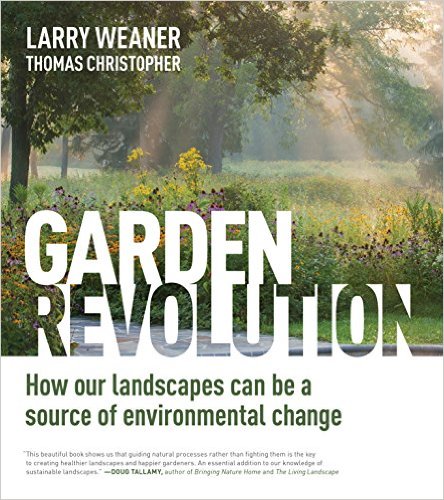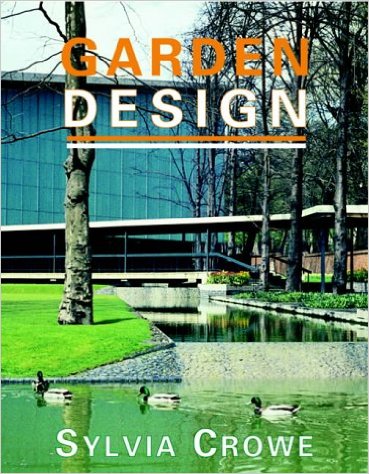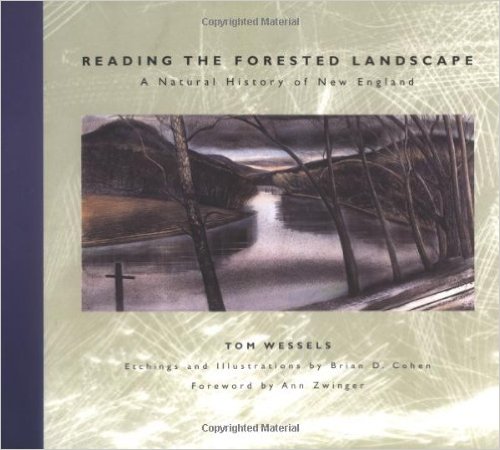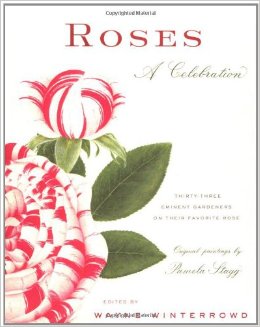Those who can’t garden, read.
On grey winter days, nothing beats sitting by a fire and reading garden books. For the last few days, I’ve been devouring Garden Revolution: How Our Landscapes Can Be a Source of Environmental Change. This 2016 publication by Larry Weaner and Thomas Christopher was top of my Christmas wish list; I’m only partway through but I’m enjoying every page. The book lays out sensible ways to garden ecologically, and, as it turns out, I was already applying its principles of natural evolution to guide the transformation of the Big Lawn into the Big Meadow. It’s nice to know that what made sense to me is supported by research and years of practical experience.

John Dixon Hunt is a landscape historian, the author of many books that provide insights into garden history and how that past influences present-day gardens. A few years ago I received the six volume Cultural History of Gardens which he edited along with Michael Leslie and I have slowly read my way up to Volume 6, Modern Gardens. I’ve benefited from many of his other books, most notably Nature Over Again about Little Sparta and Gardens and Groves about the impact of Italian gardens on those in England. This year’s gift was Hunt’s most recent collection of essays, titled Site, Sight, Insight. Considering that the title of my website is Site and Insight, is it any wonder that I enjoyed this book? His scholarship is impressive and his analyses of complex ideas are clearly expressed. I gobbled up this book and will return to it many times.

Next on the stack of Christmas presents is a book published originally in 1958, one that looks to be a good, solid read. Garden Design by Dame Sylvia Crowe examines various principles of design, using as examples such famous gardens as the Alhambra in Spain, Villa Lante in Italy, Vaux-le-Vicomte in France and Stowe in England, all of which I have visited. The author then moves on to works of Roberto Burle Marx, Lawrence Halprin and Sven Hermelin which are less familiar to me. I asked for this book and am confident that I will learn a lot from Dame Sylvia’s comments. How could I fail to? Amazon calls it ‘compulsive reading’ and compulsive is a trait I identify with quite readily.

As well as new books, I’m dipping back into some old favourites. Top of the favourites list is Reading the Forested Landscape: A Natural History of New England by Tom Wessels. This is a ‘must read’ for anyone who wants to understand the evolution of forests in the northeastern part of North America. The book is eminently readable and packed with so much information that it repays multiple looks.

Also on the favourites list is Roses, A Celebration by Wayne Winterrowd. This book contains essays by 33 eminent gardeners, each writing about his or her favourite rose. Rosarian Peter Beales chooses the “temperamental, once-flowering, wet-weather hating, but stunningly beautiful” ‘Maiden’s Blush’, a rose he fell in love with as a child. Jamaica Kincaid picks ‘Alchymist,’ a rose that entered her gardening life when she was at the “most feeble and ignorant stage.” Christopher Lloyd, having ripped out his parents’ rose garden at Great Dixter, still manages to write favourably of the single apricot-coloured ‘Mrs Oakley Fisher’ that came from Vita Sackville-West. Ken Druse, Dan Hinkley, Fergus Garrett, Graham Stuart Thomas and, of course, David Austin: all share their favourites. What makes the book so special, though, are the extraordinary watercolours illustrating each essay. These are by the very talented Pamela Stagg, winner of the Royal Horticultural Society Gold Medal, the world’s top prize for botanical paintings. Each portrait is so luscious that I stop and sniff. With only a bit of imagination, I can smell each one.

Along with these books, I’m reading my own garden journals. In the late 1990s I started taking notes about plans for the garden and I’ve been keeping the journals ever since. Over the years I’ve written regularly, noting when the lake freezes and thaws, listing plants I order, marking the date when they bloom, tracing progress on projects underway and sketching ideas for new ones. Reading early entries reminds of things I’ve almost forgotten: the summer we spent sorting out drainage problems with The Aqueduct, the misguided planting I attempted, called TheFold in the Field. More fun was reading and remembering the 99 hours I spent with my friend John Hay, cutting and glueing pieces of glass to make a mosaic map of the garden. (Yes, the total is accurate: I added up the hours as we went along.) 
The garden journals remind me of how much I’ve learned and reading them now is like re-living almost twenty years of head-aches and triumphs. The form and detail of a sculpture like Webster’s Column seem obvious now, but the journals remind me that I considered many options along the way. And that, in turn, reminds me that the obvious is obvious only in retrospect.
What garden books are you reading? Are they old friends or new acquaintances?




I have Weaner’s book and the rose book, but I haven’t read either yet! And I will be looking up the other books that you recommend. So many books, so little time!
You are So right, Kathy. I could have mentioned many more — including (I’m ashamed to say) one I received last year at Christmas whose cover has never been opened. But one of these days…
btw, your weather sounds as odd as ours. A Christmas rose blooming in January? In our cold climates, this is a rare occurrence.
Yes, most of my Christmas roses typically bloom in March, that is to say, mud season. But this particular one is noted for early bloom.
Nope, don’t read any and rely on you solely for my garden fix. However, I often google a garden or two that you mention and indulge a little more!
I’m glad to know that you sometimes follow pointers to gardens I mention.
Very nice overviews. Not easy to do.
I’m also reading the Larry Weaner book… slowly, to really try and take it in. I’ll have the opportunity in the coming seasons to test out some of his theories on what is now highly disturbed ground, post-construction.
My only critique is that the photography does not live up to the text. I don’t get the wow factor from seeing the plantings although I realize they’re well orchestrated.
I also picked up ‘The New Small Garden’ by Nöel Kingsbury to bring my New Perennial chops up to date. And I’ve been re-reading bits of ‘The New English Garden’ by Tim Richardson, which fed into my most recent blog post about the naturalistic debate in England vs. here.
Reading Weaner’s book makes me yearn for summer, to see what doing nothing (or nothing much) will bring about in and on the Big Meadow. I’d like to see more variation in colour and texture but plan to hold myself back.
Tim R’s ‘New English Garden’ is one I return to regularly, particularly when planning a garden tour. He talked to the first garden tour I hosted about the book which was just about to be published. In May this year’s tour group is visiting Plaz Metaxu — I’m really looking forward to seeing it. Plus Wildside, Keith Wiley’s garden. Plus the Bannermans new garden in Cornwall. Plus, plus…
I am following your post and the subsequent comments about the naturalist gardening with great interest but haven’t commented because I don’t really have anything to add. Sonia Day’s column was the sort of journalism that makes people believe all journalism is sensational. It seems to me that she took a tiny idea that some people may hold (i.e., I’ve seen enough of ornamental grasses and want to go back to a perennials only border) and blew it out of proportion.
Hey, maybe I do have something to say.
Wow. I envy your peregrinations in England, especially to Wildside – I’ve heard Keith Wiley speak and know the backstory, he’s a force.
I agree with your assessment that Sonia Day blew things out of proportion and was out purely to create controversy. My concern is that she has a readership who may actually find her credible – and felt like I had to do my bit to set the record straight. It also led back to Tim Richardson’s work, a superior mind and writer, although I don’t always agree with him. Did you notice how I plucked a salient quote from The New English Garden at the end, which ultimately capped off my argument better than I ever could.
Meanwhile, Piet is happily accepting of every kind of garden… but not impressed by fashion.
The debate isn’t over yet! Stay tuned on that front.
I will definitely stayed tuned to the debate, Tony. And you are right, it is essential to counter false statements wherever they come from. On the weekend I gave a talk about design ideas gleaned from English gardens. One of them was to define the space. An obvious way to do that is by building a wall… but only, I suggested, if you get someone else to pay for it. There was rueful laughter.
A delightful saunter through your reading list – AND a charming mosaic! Did you both not spend an extra hour, glass in hand, appreciating the fruits of your labours to bring it up to the round 100?! And if not, why not?!! More amusing, insightful extracts from your journals, please.
I confess, we probably did celebrate — but definitely didn’t work — during that last rounding up hour.
I may find a few extracts from the journals — a good idea to hold for the day when the idea well runs dry.
Garden Revolution looks very interesting. Could you say how Weaner’s perspective differs from Doug Tallamy? The rose books also sounds very good.
I haven’t yet read Tallamy’s book although I fully intend to. Good reminder, Jason.
What a great collection of books. I love Reading the Forested Landscape. When I first read it, I would read a chapter and then go out and walk around in my woods to see examples of what he was talking about. I didn’t know about Garden Revolution and have now added it to my “for later” shelf at the library; I look forward to reading it.
There are SO many good garden-related books, on “for now’ and ‘for later’ shelves.